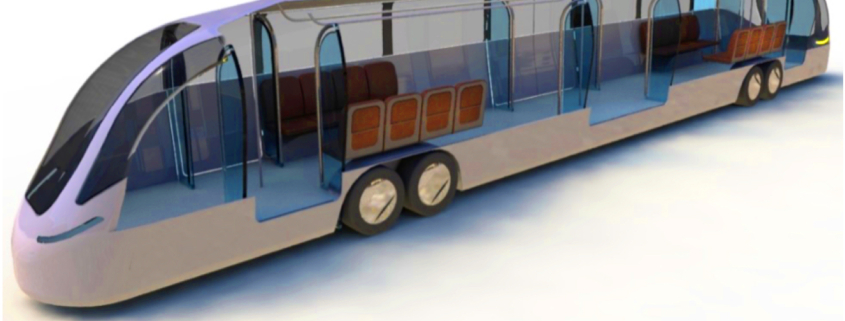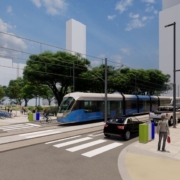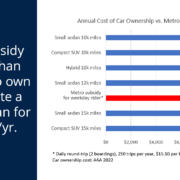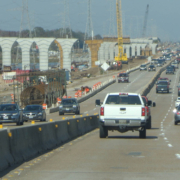Proposing an Autonomous Transit Service for Houston
This week we have a guest post from Nikhila Krishnan on a potential autonomous transit future for Houston. You can also hear her presentation at a Houston Tomorrow H-GAC lunch event this Wednesday and on the HF website here, including links to more detailed documents.
A recent post discussed that Texas was ranked near the top for residents that feel their state is the best place to live. I would go so far as to say Houston is one of the best cities to live in, but there is one thing holding Houston back from taking the top slot as the best city: effective public transit. The Houston readers can commiserate with the feeling of boredom and frustration when stuck in stand-still traffic during rush hour. We Houstonians have to make sacrifices due to limited public transit options including:
- 10 days wasted per year in the car
- thousands of dollars spent each year on gas and vehicle maintenance
- thousands of kilograms of carbon dioxide emitted annually
With the upcoming Metro Next Plan vote, there has been much discussion about future transit systems in Houston, but one key transit possibility has been absent from the discussion: autonomous vehicles (AVs).
Autonomous vehicles are advantageous for the following reasons:
- Transform system from small number of large vehicles to large number of small vehicles
- Switch from fixed-route, fixed-timetable to demand-responsive system
- Address the first/last mile problem
- Point A to point B system
Because autonomous vehicles do not require a driver (or a driver’s salary), Houston would be able to better afford a larger fleet size of smaller vehicles. This means that there would be frequent services that reduce commute times and increase convenience. In addition, autonomous connected vehicles can communicate with each other and the passengers to create demand-responsive routes which would be more convenient for riders and would lead to higher vehicle load factors. To increase connectivity, autonomous vehicles can be applied to the first mile/ last mile problem of public transit that excludes some populations from using a transit system. Many opt-out of using public transit due to limited connectivity between their initial location and the transit pick-up or between the transit drop-off and their intended destination. AVs can fill in the gaps of existing transit, helping to create a fully integrated and accessible system that can get a user from point A to point B. The advantage of private cars is that one can hop in a car and get wherever they want whenever they want. If a public transportation system is comprehensive so that commuters can get from anywhere to anywhere with short wait times, it can challenge the dominance of cars and thus change the face of Houston transit.
I recently finished a Masters course at the University of Cambridge in which I wrote a dissertation (alternate link) postulating the use of autonomous vehicles as a means of delivering a public transport service in Houston. The results from the dissertation suggest that autonomous transport systems have great potential in Houston with regards to social, financial, and environmental performance. Houston needs a forward-thinking solution when planning transit that will be in place for the upcoming decades. Autonomous vehicles are that solution and Houston can be the leader in pioneering autonomous systems for public transit.
Tory Gattis is a Founding Senior Fellow with the Center for Opportunity Urbanism and co-authored the original study with noted urbanist Joel Kotkin and others, creating a city philosophy around upward social mobility for all citizens as an alternative to the popular smart growth, new urbanism, and creative class movements. He is also an editor of the Houston Strategies blog.




 Terry Hammonds, CC 2.0 License
Terry Hammonds, CC 2.0 License



